Be the first to experience our inaugural exhibition of 2023, which features several new works by celebrated Egyptian visual artists Hamid Saeed.
Scroll below to read more about Hamid Saeed’s work and the meaning behind it
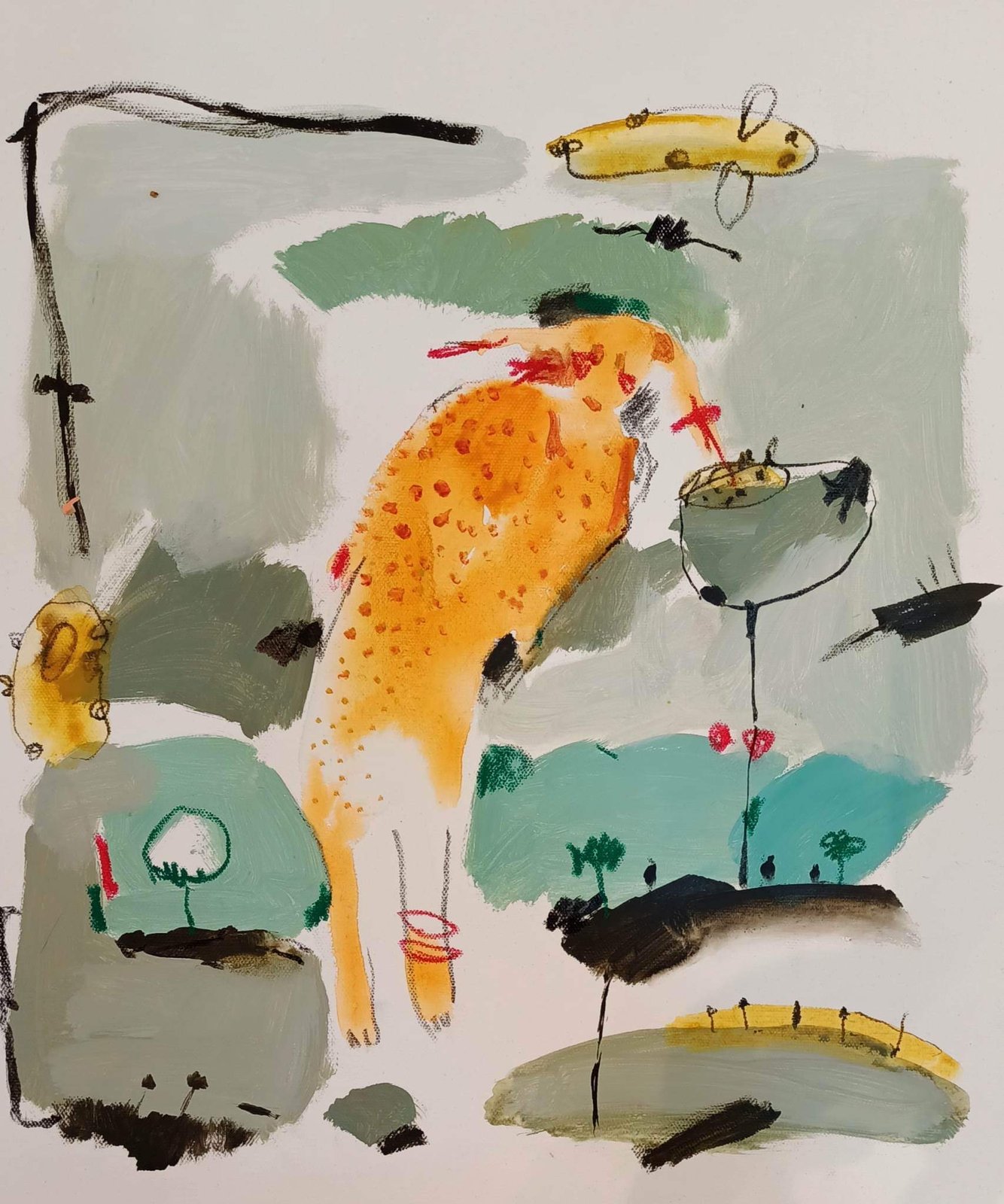


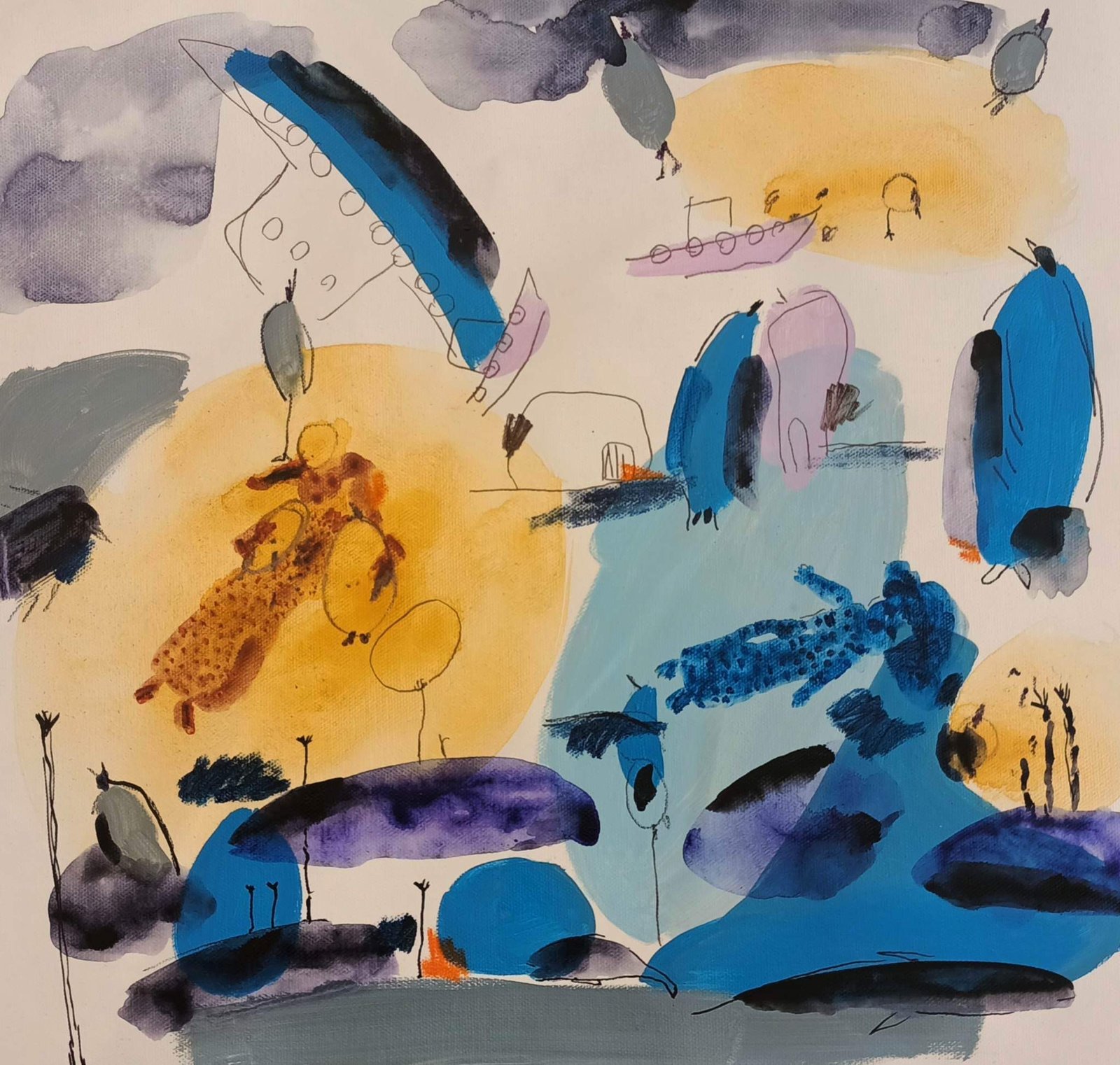
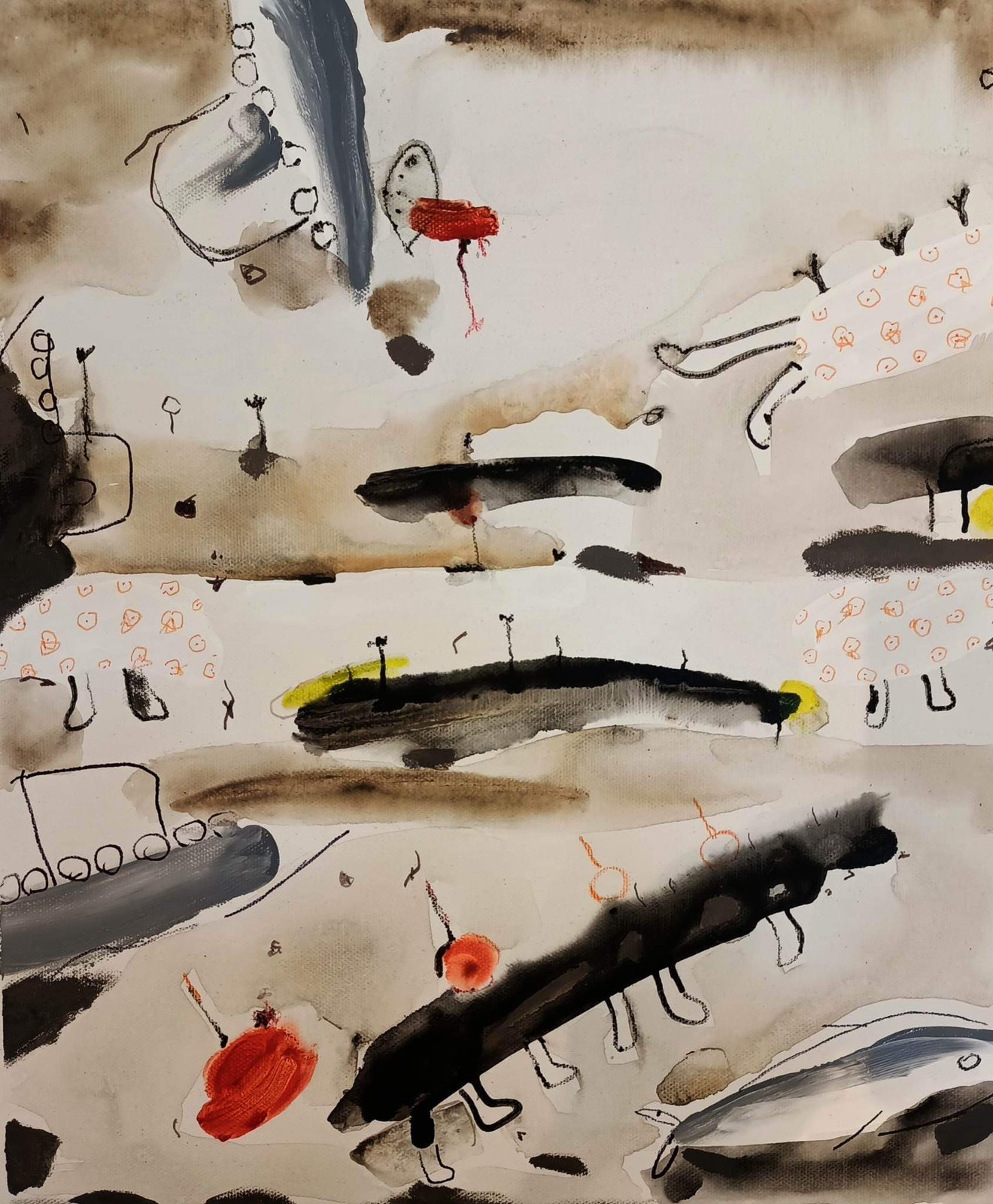
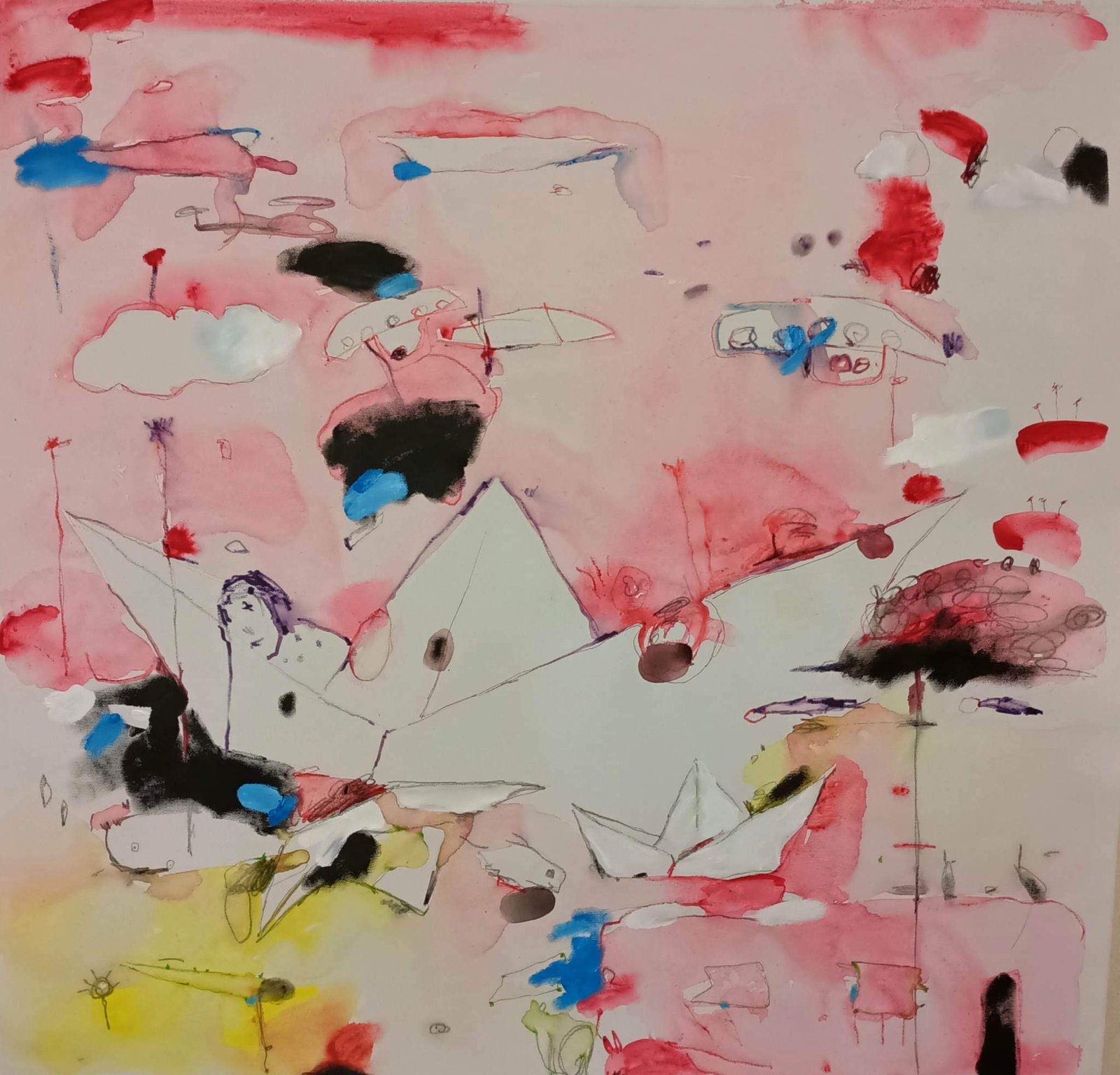
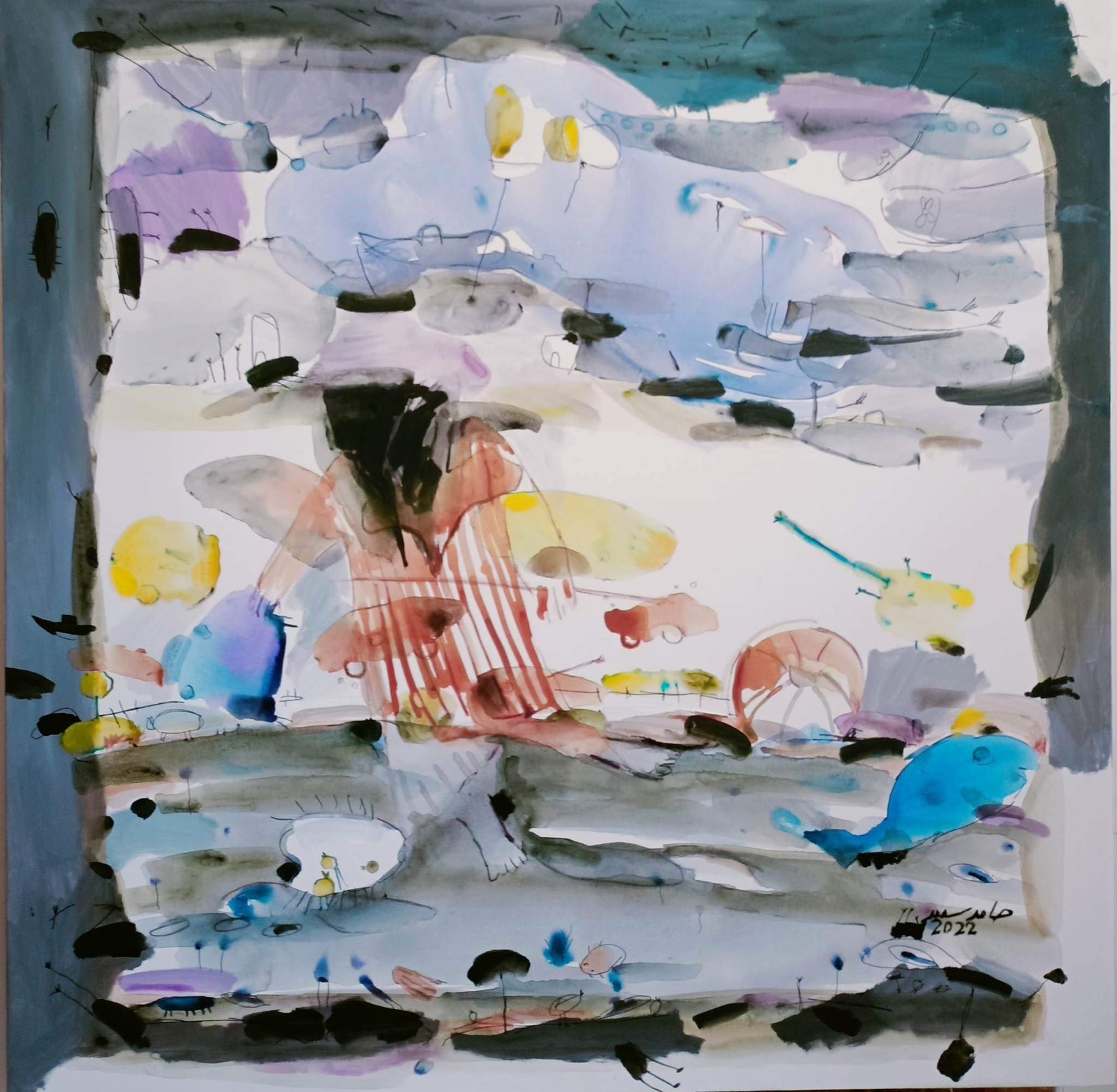
AN INDIVIDUAL IMPRESSION
By Muhammed Khudhair
The paintings of Hamed Saeed in his exhibition "No Gravity", which is an extension of his previous exhibit "Things that resemble drawing" are intended to leave a distinct impression in the viewer's consciousness. An impression equivalent to what one is left with having read a short story, in Edgar Allan Poe’s style of concentrated narration.
Only that the visual artwork's impression differs from the function of the concise narrative in the singularity of its elements, evoking deep emotions; in that the relationship between component and form in the painting is voluntary and free, while the relationship between form and theme in the short story is consistent, causative and interchangeable. As well as equal in value and effect.
With this difference, the visual art excels over the literary art. In being drawn from the reference of reality, which directs the literary arts in its depiction, assigning its events and plotting. It excels in the method and the mental and psychological targeting.
On this axis of proximity and distance, the artistic visual text can find its way to save the literary text and diversify its speech and update its space of impression. Except for the possibility of getting stuck between form and its actual and natural reference, the literary text relies on the ability of the painting to create an indication and compose its free style, as well as liberate it from the authority of the focal meaning.
Despite confining the vision in a small composed space, the energy of the formation of shapes creates a static field around it. That repeats itself in similar sized and spaced paintings.
The profuse randomness of shapes in the paintings of Hamid Saeed surpasses the vision field, as if the horizontal transition of an emotional state from one board to another, equal in space and effect, would shatter the sequence of cognitive harmony and disrupt the consistent signals of rhythm on the scale of visual perception. (Similar to the case of discordant musical transitions in Stravinsky’s compositions.)
This will force the receiver to adjust their visual responses to what the random representation of shapes, with their non-compatible line and color, sends to their usual sense of beauty. In this aesthetic interaction between descriptive formation and narrative text, the importance of the perspective, design, and concept in an integrated constructed unit, is highlighted. This concept of the constructed unit is not denied by artist Hamid Saeed, who acquired high experience from his studies in Egypt, but he also confirms its presence in his exhibition.
Going back to the design element in the drawing process, without revoking the effect created by the photographic balanced composition. Hamid Saeed designs his painting in an evocative style, characterized by size-reduction, distortion, and clutter in the photographic space; as the design angles narrow, the difficulty of creating increases, and evocation becomes the ultimate representation and imitation. Therefore, the viewer's perception is intensified and the ratios are canceled, without reaching pure abstraction; since there is a gap; a cognitive barrier between Saeed and pure abstraction that prevents him from abandoning his poetic imitative narrative, which counterparts the narrator’s intended meaning, plot, explanation and ending.
So he asks the question: where does the painting end? What is the fate of this evocative series of shapes; and has the separation between visual singularity and its realistic reference been achieved? Considering the painting as an abstraction, not a representation or a less-significant narrative.
And perhaps these are the questions that the receiver of the photographic creation faces, in terms of understanding the concept itself, but unfortunately, does not reach a definitive answer: there is a large gap between the two operations; creation and understanding, which occurs in a conventional presentation, that does not exceed the usual social environment.
Hamid Saeed's concept of The City (represented in his largest compositions and objects) leads us to find the resemblances for it in nature, and in the stability of natural and daily things that do not catch the eye, such as children’s toys, domestic animals, and faces of strangers in the street, that methodically scatter and unravel like threads of wool in the hands of the anxious painter's brush, displayed in a cornered workspace hidden between the old alleys of the city.
The social encounter alone determines the demand for the collective supply among the workspace’s customers, in addition to the visual harmony and optical assistance for marketing, and discussion revolving around the fate of the paintings. This is the cultural formula itself in the local art market; confined auctioning between walls. In this environment, there occurs an embarrassing collision with artistic modernism (and beyond modernism), or what can be described as an ideological intercultural mechanism. Within this conceptual exhibit of chance and slow-building anxiety, Hamid Saeed's urban experience challenges expectations and exceed the normative cultural format of concealing rightful ambition. We are making very slow progress in the field of conceptualizing, that revolutionary Iraqi artists have paved the way for.
Here, the exhibition “Actions and Simulations” comes to create a balance between the image and its violently distorted history and architectural gaps, and the lack of its ability to contemporarily reveal the experimental spirit of the era, and the reality of the experience.
All this is treated by Hamid Saeed in a style that simulates using quick linings and superficial shapes free of gradual color and emotional sensitivity, attempting to capture the original act in its very natural violence, ferocity and survival struggle, and simulate it to the degree of violation and transcendence. In short, the concept stretches in its place, hesitant to delve into that which it inspires. While the artist watches the scene from an old wooden balcony, where no sea is reflected at the edges of the dancing horizon.
